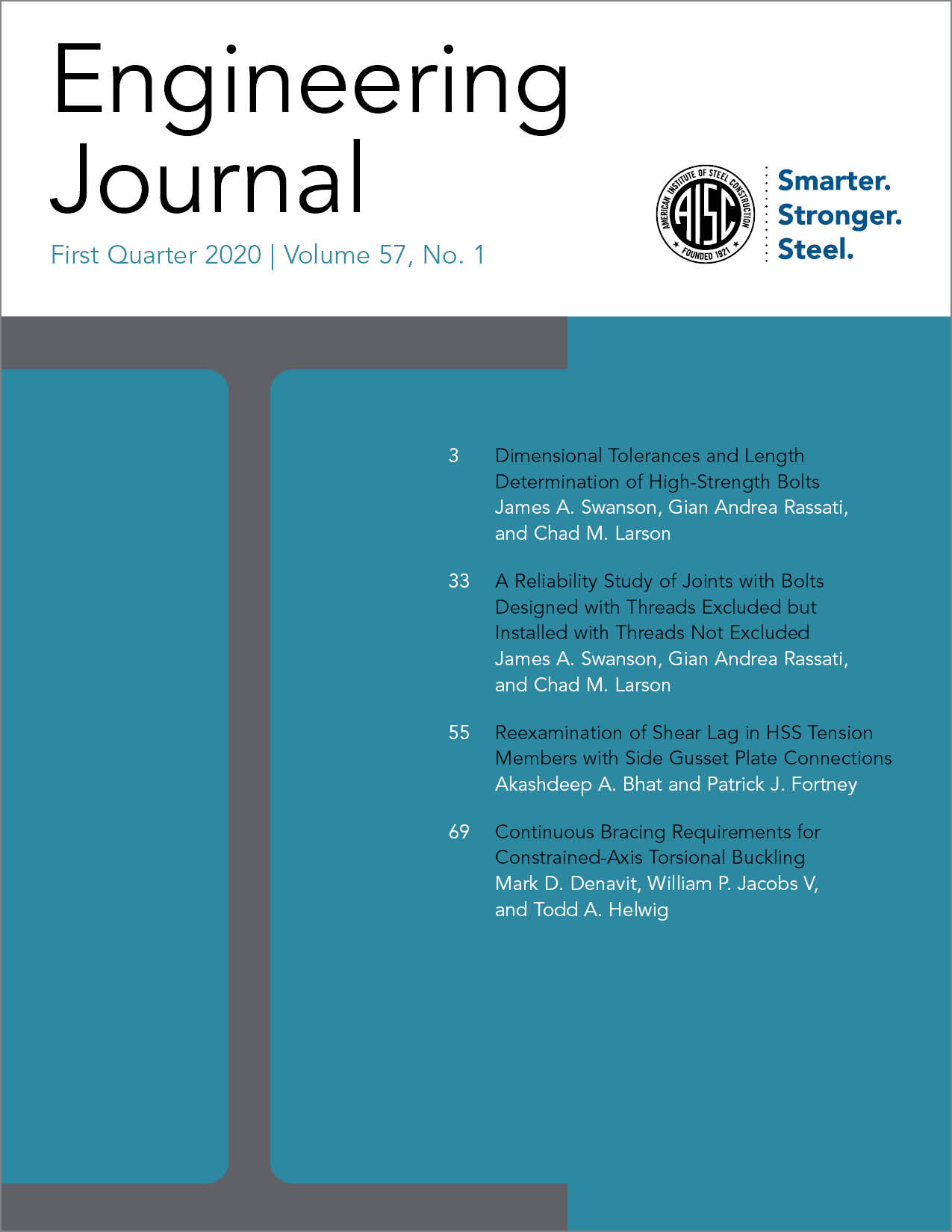Continuous Bracing Requirements for Constrained-Axis Torsional Buckling
DOI:
https://doi.org/10.62913/engj.v57i1.1158Keywords:
Axial strength, constrained-axis torsional buckling, stability, wide-flange shapesAbstract
The design of floor and roof framing members is typically controlled by flexural demands; however, if a member serves as a chord or collector it can also be subjected to significant axial compression. Continuous restraint provided by the floor or roof diaphragm is commonly assumed in design to provide adequate bracing of connected wide-flange members against minor-axis flexural buckling; however, these members are still susceptible to major-axis flexural buckling and potentially to torsional buckling about a constrained axis located at the top flange. In addition to the lateral restraint, floor and roof decking systems can also provide continuous torsional restraint through their flexural stiffness and strength. This restraint can be used to increase the calculated constrained-axis torsional buckling strength or inhibit the mode altogether. In this paper, the specific case of a wide-flange steel beam-column with both lateral and torsional restraint located at the top flange is investigated and torsional bracing requirements are derived. The focus of the study is on continuous torsional bracing and its effect on the constrained-axis torsional buckling mode. The requirements are illustrated through a design example and a parametric study is performed examining typical floor and roof decking system configurations, identifying cases where improved design efficiency can be achieved.

